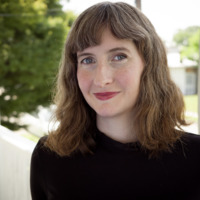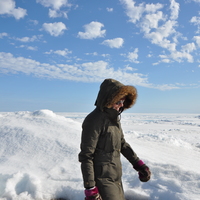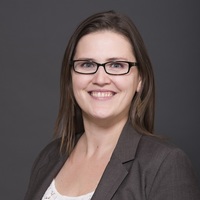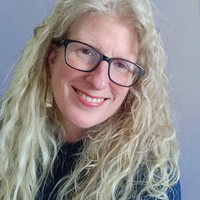Papers by Emma Gilheany

Canadian Journal of Archaeology, 2020
In this collaborative paper between university-based archaeologists and Nunatsiavummiut youth, we... more In this collaborative paper between university-based archaeologists and Nunatsiavummiut youth, we discuss our attempts to unsettle our research while working on community-oriented projects in Hopedale, Nunatsiavut, through the application of strength-based approaches. We outline the need for strength-based approaches for involving Nunatsiavummiut youth in archaeology and the ways we apply these approaches to Kelvin's research project, the Agvituk Digital Archive Project, and Gil-heany's dissertation research on the recent history of Hopedale. We incorporate key aspects of these approaches, including: focu-sing on the whole person and recognizing their social context; actively involving participants in decisions; recognizing strengths and expertise of participants so that everyone is both a teacher and a learner; and encouraging experiences where group members can be successful. We argue that an unsettled , strength-based approach necessitates a future-oriented archaeology. Résumé. Dans cet article produit en collaboration par des archéologues rattachés à l'université et des jeunes Nunatsiavummiuts, nous discutons de nos tentatives visant à dés-tabiliser notre recherche tout en travaillant sur des projets communautaires à Hopedale, Nunatsiavut. Nous mettons l'accent sur la nécessité d'adopter des approches axées sur les points forts pour faire participer les jeunes Nunatsiavummiuts à l'archéologie ainsi que sur les manières dont nous appli-quons ces approches au projet de recherche de Laura Kelvin-le projet d'archives numé-riques Agvituk-et la recherche de disserta-tion d'Emma Gilheany portant sur l'histoire récente de Hopedale. Nous incorporons des aspects-clés de ces approches, notamment : nous concentrer sur la personne dans son ensemble et reconnaître son contexte social; faire en sorte que les participants jouent un rôle actif dans la prise de décisions; reconnaître les points forts et l'expertise des participants afin que tous soient à la fois enseignants et apprenants; et encourager des expériences pour lesquelles les membres du groupe sont susceptibles de réussir. Nous soutenons qu'une approche déstabilisée axée sur les points forts nécessite une archéologie orientée vers l'avenir.
Conference Presentations by Emma Gilheany
Models of hunter-gatherers in the northern Rio Grande region have been overwhelmingly economic. M... more Models of hunter-gatherers in the northern Rio Grande region have been overwhelmingly economic. Most research has been devoted to studies of optimal foraging strategies, seasonal economic rounds, and hunting practices. This paper aims to intervene in prevailing models by drawing on Archaic petroglyphs from the Rio Grande Gorge to develop new understandings of how hunter-gatherers perceived the landscape as a network of meaningful places. The Archaic rock art is characterized by its aniconicity and inscrutability. Most panels are composed of simple dots, lines, and amorphous shapes. The nature of this imagery demands that one consider the canvas— its placement in the broader landscape. This paper will consider the locations of these glyphs to see whether they can be made meaningful through their spatial associations with particular sorts of landscape features.
Archaeologists have recently developed both an appreciation for technical knowledge acquisition ... more Archaeologists have recently developed both an appreciation for technical knowledge acquisition and tools for tracing its development through the analysis of material culture. This paper presents novel methods for measuring micro-morphological characteristics of pottery which relate to potters’ skill level and show promise in elucidating the social conditions in which the pottery was ultimately deposited. The data is drawn from two Archaic shell rings, a site type whose position within a broader landscape is very much in question. The interpretations are therefore of particular interest while the methods themselves appear valuable to a broad audience.
Conference Papers by Emma Gilheany

While learning has recently become a prominent area of research within archaeology, tracing its h... more While learning has recently become a prominent area of research within archaeology, tracing its history and character through objects has proven difficult. This is particularly true when learning is considered a staged event in which novice engagement with objects is intermittent rather than sustained. Learning to make pottery is often staged in that novices assist in particular aspects of the productive chain while more experienced individuals perform other tasks. As such, individual vessels often go through multiple hands, making assignment as “novice-wares” problematic. This paper offers a way forward through the application of a constellation of techniques; each of which provides information on a discrete link in the production sequence and assess the level of skill reflected in particular attributes. By applying these methods to two pottery assemblages from neighboring contemporaneous sites, the shortcomings and potential feasibility of these techniques are highlighted and new research directions are offered.
Conference Posters by Emma Gilheany
Recent excavations of an early eighteenth century torreon in the northern Rio Grande village of D... more Recent excavations of an early eighteenth century torreon in the northern Rio Grande village of Dixon, NM, have highlighted both the defensive stance of many early Spanish villages as well as the remarkable uncertainty of life on Spain’s distant northern frontier. Far from the empire’s bosom, Spanish colonists lived in a land that continued to be dominated by native peoples, both economically and, to a great extent, politically. Here, we report on the torreon excavations as well as recent survey work that collectively bring to light the archaeology of colonial uncertainty in one corner of the Spanish empire.











Uploads
Papers by Emma Gilheany
Conference Presentations by Emma Gilheany
Conference Papers by Emma Gilheany
Conference Posters by Emma Gilheany